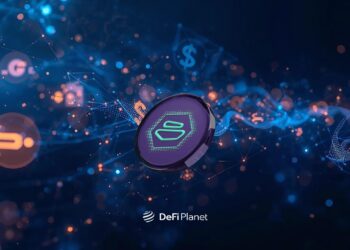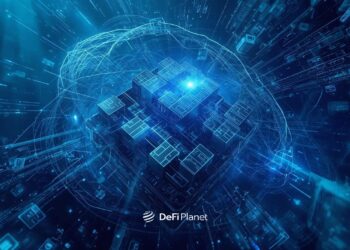The evolution of blockchain technology has given rise to several revolutionary ideas, and a new and very promising one is the concept of Decentralized Physical Infrastructure Networks (DePINs).
Traditionally, physical infrastructure has been developed and managed by centralized entities that oversee planning, funding, and maintenance. Individuals and businesses have long depended on large corporations or governments to provide these services. While this model has functioned for decades, it has also produced inefficiencies such as high costs, limited accessibility, bureaucratic delays, and vulnerability to corruption.
Take cloud computing as an example. When you store files online, you’re paying Amazon, Google, or Microsoft to keep your data accessible. While convenient, this setup comes with risks—data breaches, service outages, and even corporate failure. Plus, you’re locked into a payment cycle for storage you may rarely use. Over time, this becomes inefficient and costly.
The emergence of blockchain technology and the success of DeFi have legitimized the idea that any kind of network can be governed and maintained in a decentralized manner. DePINs take this concept a step further by applying the principles of blockchain to physical infrastructure.
How DePINs Works
DePINs operate on a combination of blockchain technology, tokenized incentives, and decentralised governance, allowing them to identify and reward users that contribute to the value chain.
At the core of a DePIN is incentivized participation. Instead of relying on a single company or government to provide infrastructure, DePINs reward individuals or organizations who contribute resources, like bandwidth, storage, energy, or computing power, with blockchain-based tokens. For example, in the Helium Network, individuals deploy wireless hotspots and receive HNT tokens for providing network coverage. Also, Filecoin users who offer storage space are rewarded with FIL tokens when their storage is utilized.
These tokens derive their value from the multiple purposes that they serve on the network. In addition to being used as compensation for contributors, most projects used them to grant governance rights and enable transactions within the ecosystem.
This model encourages organic growth. Because contributors have a financial incentive, networks can expand quickly without relying on centralized infrastructure providers.
The second layer of how DePINs work is decentralised governments where, unlike traditional infrastructure systems that make decisions through a centralised authority, these networks rely on decentralised government models, often through Decentralized Autonomous Organizations(DAOs). Stakeholders, i.e. those who contribute to or use the network, participate in decision-making processes, vote on upgrades, and ensure that the network evolves based on collective interests rather than corporate priorities.
They use blockchain-based smart contracts to verify and validate contributions, helping to maintain transparency and validate contributions. For example, you can have a decentralized power grid using a peer-to-peer(P2P) model to verify that a household has generated excess solar power before issuing tokens as compensation.
Benefits of DePINs Across Industries
By establishing a workable framework for decentralizing ownership and governance of infrastructure, DePINs enable more inclusive access and introduce innovative applications in every sector.
In telecommunications, DePINs help democratize internet connectivity. As previously noted, networks like Helium allow individuals to provide local wireless coverage in underserved regions, reducing dependency on large telecom providers.
In the energy sector, DePINs enable peer-to-peer energy trading. Projects like Powerledger and Grid+ allow households with solar panels or wind turbines to sell surplus energy directly to others, bypassing traditional utility companies and centralized grids.
Transportation and logistics also stand to benefit. Traditional ride-hailing platforms take a sizable cut from drivers and maintain full control over data, pricing, and policies. A DePIN-based ride-sharing system would allow drivers and riders to connect directly, with payments processed via smart contracts. Projects like DAV Network and TeleportDAO are exploring this model.
Where DePINs Are Making a Difference
| Sector | What DePINs Enable |
| Telecom | Community-powered wireless networks (e.g., Helium) |
| Energy | Peer-to-peer solar trading (e.g., Powerledger, Grid+) |
| Logistics | Decentralized freight matching, transparent supply chains |
| Transportation | Ride-sharing without intermediaries (e.g., DAV Network, TeleportDAO) |
| Data Storage | Rent unused storage securely (e.g., Filecoin, Storj) |
| Compute | Share unused CPU/GPU power (e.g., Golem) |
For freight shipping, which often relies on opaque and costly centralized firms, DePINs offer tokenized freight matching. This system connects independent truckers with shippers directly, reducing fees and boosting efficiency. Blockchain-based tracking also improves transparency and helps combat counterfeiting in global supply chains.
Data storage is another area of disruption. DePINs support decentralized storage by enabling individuals to rent out unused space, creating a more secure and censorship-resistant environment. Projects like Filecoin and Storj are leading efforts here. Similarly, computer networks like Golem allow users to lease excess computing power, expanding access to decentralized processing resources.
Challenges and Barriers to Adoption
Despite their promise, there exists a myriad of obstacles that must be overcome to ensure a wider adoption.
One major hurdle is regulatory uncertainty. Many governments and policymakers are still working to define clear legal frameworks for decentralized networks. Industries such as telecommunications, energy, and logistics—historically controlled by centralized authorities—may resist this shift or impose legal roadblocks.
Another barrier is the high upfront cost of deploying physical infrastructure. Unlike software-only blockchain applications, DePINs require tangible assets such as hotspots, solar panels, or storage servers. These hardware costs and the difficulty of bootstrapping networks can discourage early adoption.
Scalability and reliability are also ongoing concerns. DePINs operating in sectors like telecom or logistics must ensure that service quality meets or exceeds centralized alternatives. Achieving this will depend on advances in blockchain scalability, including the use of Layer 2 protocols and more efficient consensus mechanisms.
RELATED: Can “DePINs” Fix the Telecom Industry’s Woes?
To reach broader adoption, DePINs will need supportive regulatory frameworks, well-structured incentive models, and intuitive onboarding processes that lower entry barriers for users and businesses. Public awareness and education will also be essential in driving understanding and trust in decentralized infrastructure.
Final Thoughts: Are DePINs the Future of Infrastructure?
While still early in their evolution, DePINs stand out as one of the most promising blockchain applications beyond finance. They undeniably hold the potential to reshape global infrastructure and challenge centralized monopolies. DePINs can democratize infrastructure development and extend services to underserved communities by replacing centralised intermediaries with decentralised, incentive-driven models.
What makes DePINs compelling isn’t just the tech; it’s the potential to unlock infrastructure in places where traditional systems have failed or stalled. But the potential isn’t enough. For DePINs to become a real alternative, they must overcome regulatory inertia, deliver consistent performance, and prove they can scale in the physical world—not just on-chain.
Their success will depend on how well they bridge the gap between bold ideas and real-world execution. Without clear policies and legal frameworks, DePIN projects may face resistance from governments and entrenched industry players who control traditional infrastructure systems. Additionally, ensuring that decentralized networks can operate securely, efficiently, and at scale remains a technological challenge that developers must continue to refine.
Keep an eye on this space—because if they succeed, they won’t just upgrade infrastructure. They’ll redefine who gets to build and benefit from it.
Disclaimer: This piece is intended solely for informational purposes and should not be considered trading or investment advice. Nothing herein should be construed as financial, legal, or tax advice. Trading or investing in cryptocurrencies carries a considerable risk of financial loss. Always conduct due diligence.
If you would like to read more articles like this, visit DeFi Planet and follow us on Twitter, LinkedIn, Facebook, Instagram, and CoinMarketCap Community.
Take control of your crypto portfolio with MARKETS PRO, DeFi Planet’s suite of analytics tools.”





















